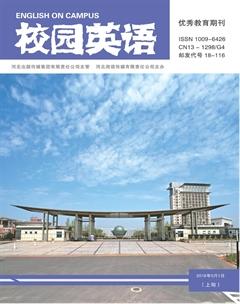General Introduction of One Literary Study Method
王慧
The comprehension of literary analysis is beneficial for English learners who are eager to appreciate English literature. As is following, one kind of literary analysis method is introduced, that is, feminism criticism.
To begin with, what is feminism?According to The New Encyclopedia Britannica, “feminism”, also called “feminist movement” or “womens liberation movement”, refers to the social movement that seeks equal rights for women, giving them equal status with men and freedom to decide their own careers and life patterns. It has its roots in the humanism of the 18th century and the Industrial Revolution.
Women had long been regarded as inferior to men physically and intellectually. Both law and theology had ordered their subjection. Women could not in their own names possess property, engage in business, or control the disposal of their children and even their own persons. Concern for womens rights dates from the Enlightenment, the first feminist document was Mary Wollstonecrafts A Vindication of the Rights of Women (1792), which challenged the idea that women exist only to please men and proposed that women receive the same treatment as men in education, work and politics and be judged by the same moral standards with mens. A modern milestone in feminism was established by Simone de Beauvoir, whose book, The Second Sex (1949), raised female consciousness by appealing to the idea that liberation for woman was liberation for man too. Feminism aimed at changing traditional gender prejudice on female education and practice in the social field. Related feminist theories in such fields as literary study, politics,philosophy,history, emerged in the second feminist movement, which led to the establishment of global women study projects.
Feminist criticism,as one method of literary study, rose up after World War II as a literary branch of the feminist movement, which sets several aims, including overthrowing the established conventions of western literature, breaking the patriarchal standards on which the traditional literary criticism was based, recovering and reevaluating the forgotten and neglected texts written by women writers, and establishing female canons on the basis of the study of woman-centered writing, etc.
Feminist critics believe that culture has been dominated by men to such a high degree that literature is full of unexamined male-produced assumptions. Women had fewer opportunities than men to become writers for one thing—they got much less access to the education of such things as poetry, drama, and fiction that the male patriarchy valued. Even when they managed to write, men critics sometimes neglected their work simply because it came from a woman. Feminist critics also explore the cultural construction of gender and identity. In general, most American and French feminists, who jointly occupy the dominant position in feminist criticism, agree that women are constructed rather than born to be what they are like. However, they are varied in their approaches—American feminists tend to be more interested in political analysis of literary works, while French school focuses on critical theories extending to the reaches like psychoanalysis, linguistics, etc. Generally, feminism criticism can be categorized to be: liberal feminism. Marxist feminism, psychoanalytic feminism,ecofeminism, radical feminism, socialist feminism, feminism of colour.

